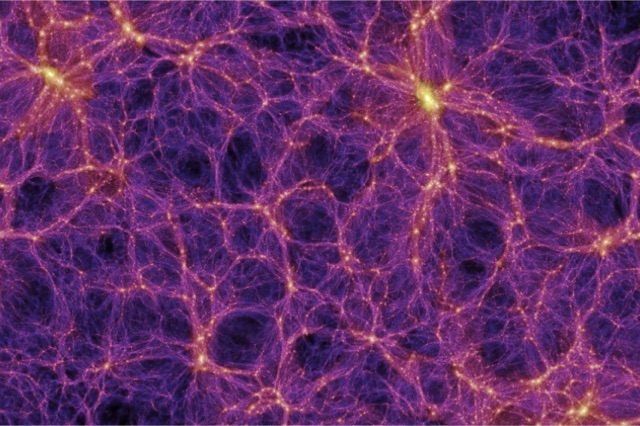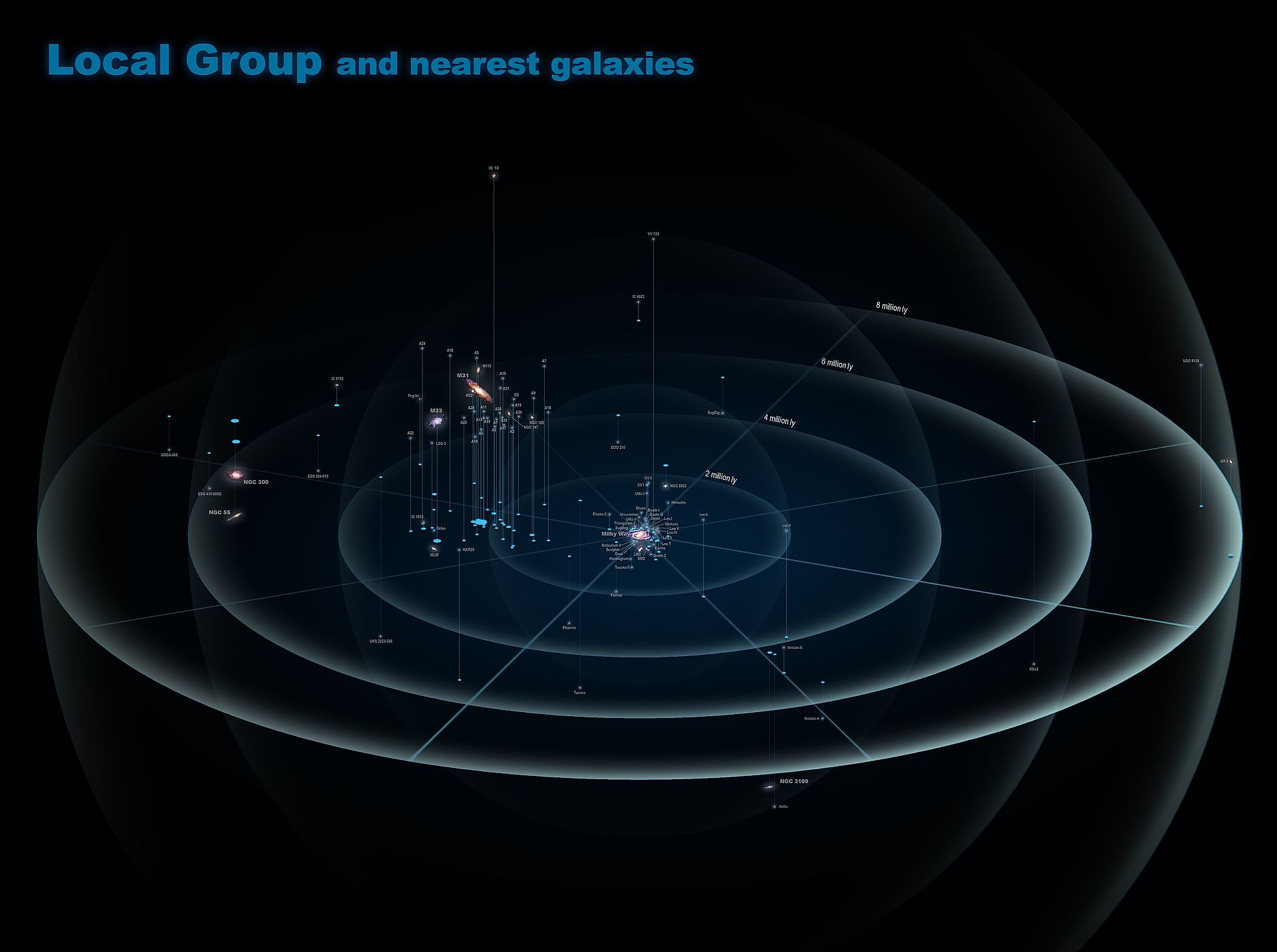Our planet is part of the larger structure of the Solar System, shaped and made stable by the force of gravity. Our Solar System is gravitationally bound to the Milky Way galaxy, along with hundreds of millions of other solar systems. And our galaxy is also part of a larger structure, where not only gravity, but the expansion of the Universe, shapes and molds that structure.
For regular Universe Today readers, none of that is news.
Now a new study sheds some light on a curious part of our cosmic neighbourhood, where there is basically nothing: The Local Void.
Galaxies aren't spread evenly throughout the Universe. They form filaments and clumps throughout space.
Our Milky Way galaxy is part of a group of galaxies called the Local Group. The Local Group is dominated by the Milky Way and its larger sibling, the Andromeda Galaxy. The many dwarf galaxies clinging gravitationally to the Milky Way and Andromeda round out the Local Group's population.
The Local Group itself is part of an even larger structure, called the Laniakea Super-Cluster, which contains over 100,000 galaxies.
Bordering our own galaxy is a distinct area of nothingness, known as the Local Void. The Local Void is part of the vast cosmic structure in our neighbourhood, a region bereft of galaxies (almost.) Scientists want to know more about our galactic neighbourhood, and a new study published in the Astronomical Journal maps the extent of the Local Void.
Our Milky Way is not only part of the Local Group of galaxies, it's part of what's called the Local Sheet. The Local Sheet is a flat array of galaxies that borders the Local Void.
The Local Sheet includes not only the Milky Way, but also other members of the Local Group, and some other galaxies. The Milky Way, along with the rest of the Local Sheet, is moving away from the void at 260 km/second.
All matter is attracted to other matter by gravity. That's why we see filament structures and clumping structures in the large scale map of the Universe. That's also why there are voids.
Once a void starts, there's nothing there to attract any matter, and the void grows. In fact, if you were to pick a point at random in the Universe, chances are you would pick a void. Nothingness is more common than something-ness.
 The large-scale structure of the Universe showing filaments and voids (Millennium Simulation Project)
The large-scale structure of the Universe showing filaments and voids (Millennium Simulation Project)
The new study is titled "Cosmicflows-3: Cosmography of the Local Void." Cosmicflows-3 is a compendium of over 17,000 galaxy distances in our cosmic neighbourhood, and it constitutes a new, updated map of the vast Local Void. It's the third edition of the compendium, and each new edition is more thorough than the last.
As gravity makes galaxies move towards each other, voids open up. The Local Void is of particular interest to scientists because the matter that makes up the Milky Way and the rest of the Local Group likely came from the Local Void.
Studying these voids should also tell us something about Dark Matter. The Local Void is difficult to study because it lies behind the central mass of the Milky Way, blocking it from view.
 Local Group and nearest galaxies. (Wikipedia Commons/Antonio Ciccolella)
Local Group and nearest galaxies. (Wikipedia Commons/Antonio Ciccolella)
The lead author of this new study is R. Brent Tully, of the University of Hawaii Institute for Astronomy (IfA.) Tully and the rest of the team responsible for the study got around that obstacle by observing the motions of galaxies, and then inferring the distribution of mass responsible for the motion.
That motion is not only due to gravity, but also the expansion of the Universe. The team behind the study uses the motion of galaxies to not only infer the mass distribution, but also to construct three-dimensional maps of our neighbourhood of the Universe.
They used that data to construct a cosmographic map that highlights the boundary between the collection of matter and the absence of matter that defines the edge of the Local Void. This is the same technique that Tully and other scientists used in 2014 to identify the full extent of our home super-cluster of over one hundred thousand galaxies. (They named it Laniakea, meaning "immense heaven" in Hawaiian.)
The video below explains the study's findings and the shape and form of the Local Void and the surrounding structures.
There's also an interactive 3d map of the Local Void that shows everything in a succinct 5 seconds. Check it out.
So what's the conclusion?
Back in 2007, Tully found that the void is expanding. That was based on the presence of a dwarf galaxy inside the void. It also showed how large the void is.
The dwarf galaxy was fleeing the void at 350 km/s. That means that the Local Void has to be huge, at least 150 million light years across. That's because the faster the dwarf is travelling, the weaker the void's gravity has to be, meaning it has to be larger.
In the last 3 decades, astronomers have been trying to understand the motions of the Milky Way, our nearest large galaxy neighbor Andromeda, and their smaller neighbors. All of them deviate from the overall expansion of the Universe by over 600 km/s (1.3 million mph).
This new study shows that roughly half of this motion is generated "locally" from the combination of a pull from the massive nearby Virgo Cluster and our participation in the expansion of the Local Void as it becomes ever emptier.
Living next to a void that's 150 million light years across may sound unsettling. All that nothingness, so close. But that's just the way it is.
It's not like we're going to get sucked into the void. In fact the reverse is true. The lack of matter in the void means a lack of gravity, and we're slowly moving away from the center of the void, in our position with the other galaxies on the Local Sheet.
But it's there. It means something in the ongoing shaping of the Universe, and may tell us something about how the Milky Way came to be. Stay tuned.
This article was originally published by Universe Today. Read the original article.
#Space | https://sciencespies.com/space/theres-a-huge-void-near-our-galaxy-its-mysterious-depths-have-just-been-measured/
No comments:
Post a Comment